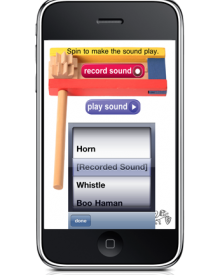- Home
- Play & Learn Home
- Online Enrichment
- Experience Modern Israel
- Israel It's Complicated
- Jewish and Me
- Jewish Holidays Jewish Values
- Jewish Values in Genesis and Jewish Values in Exodus
- Min Ha’aretz
- Our Place in the Universe
- Simply Seder
- The Prophets: Speaking Out for Justice
- Making T'filah Meaningful
- Make, Create, Celebrate
- Yom Haatzmaut Resources
- Hebrew Apps
- About The OLC
- What is the OLC?
- Introduction
- Get Started
- Resources
- OLC Content
- Parent Materials
- See My OLC Classes
- Store
Purim Lessons on Justice from Our New Student Journal on Values and Holidays
Written by Behrman House Staff, 03 of March, 2014Purim is a time for food and fun as we commemorate victory over a villain. It can also be a time to take younger students into a deeper exploration of essential questions about justice. What is justice, and why do people put themselves at risk to fight for it? How do the main characters in the Purim story serve as examples of justice?
Explore these questions with this lesson plan from the new student journal, Jewish Holidays, Jewish Values, coming this spring.
Justice, Justice You Shall Pursue: A Purim Lesson
Purim is a time for food and fun as we commemorate victory over a villain. It can also be a time to take students beyond the Purim story itself, into a deeper exploration of essential questions about justice.
Essential Questions
What is justice, and why do people put themselves at risk to fight for it?
How do the main characters in the Purim story serve as examples of justice?
Goals
From this session, students will be able to explain how Esther and Mordecai risked their lives to fight for justice for their people. They will also come to understand that there are injustices in the world and that there are many ways to respond to them.
Introduction
In the Purim story, Queen Esther fights to save her fellow Jews. She approaches King Ahasuerus in order to reveal Haman’s plot, even when doing so could cost her her life. Mordecai also stands up for justice—by not bowing down to Haman and by encouraging Esther to intervene with the king. This lesson will examine the value of tzedek, “justice,” and look at examples of justice in this story, in our history, and in our lives today.
Making Meaning: Tzedek
Remind students that Purim is a time when we are commanded to give tzedakah. Now looking at justice, or tzedek, your students may notice how similar these words are. First, ask students what justice is and record some of their answers on the board. Then, write out the words tzedek and tzedakah (you can use Hebrew or the transliteration, or both). Ask students what they notice when they compare the two words. Have volunteers come and circle the letters the two words have in common. Ask students why they think these two words are similar in Hebrew.
The Torah provides plenty of material on the value of tzedek. Ask students to find the phrase Tzedek, tzedek tirdof in Deuteronomy 16:20. Discuss: why is the word tzedek repeated? Why must we pursue justice, and how have different cultures done that?
Values in Action: Pursuing Action
Give students an opportunity to view these three images. Perhaps write out the captions for them to review. Ask students to look carefully at each of the images, and consider what is happening and how it shows an example of someone standing up for justice. Give students time to respond to the caption prompts, then allow time for them to share responses. (As an alternative, you can post the captions on large sheets of paper on the walls, and have students circulate and write next to each caption their thoughts about how people in the image are demonstrating tzedek.)

Tzedek Today
As a group, brainstorm about injustices we see today. This can include anything from homelessness to a student being treated unfairly at school. Keep a list on the board or a flip chart as the students share ideas. Ask students, in pairs, to write out or draw examples of injustice, explain or drawing where and why they might occur. Then have them consider together ideas for what they might do to right them. Prompt them to be creative and think deeply about what they can do individually to address injustice, and how they can speak out to encourage others to address injustice in the world. Print out this organizer for students to use here.
Wrap Up
Close by asking whether justice, tzedek, always prevails. Why or why not? The Purim story is an example of justice prevailing, but are there examples in Jewish history where justice has failed? (the Holocaust, the Spanish inquisition, destruction of the Temple). How does acting on behalf of justice make students feel? (scared, worried, excited, nervous, hopeful).
Enrichment Option:
Have students create Purim masks (or Pinterest boards) representing the actions of Mordecai and Esther. Brainstorm words that describe the personalities of Esther and Mordecai as they acted for justice. Provide art materials and have students decorate their masks with these words and related images.
One of the goals in our upcoming book, Jewish Holidays, Jewish Values Journal, is to help learners in 3rd-5th grade identify the values exemplified in our holiday traditions and explore both the ways these values connect to their own lives, and ways they can translate these values into actions. This lesson was excerpted from the teacher materials for the student journal by Rachel Gelfman Schultz and Aliza Ziff.
Jewish Holidays, Jewish Values will be available this spring. For more information contact customersupport@behrmanhouse.com.


